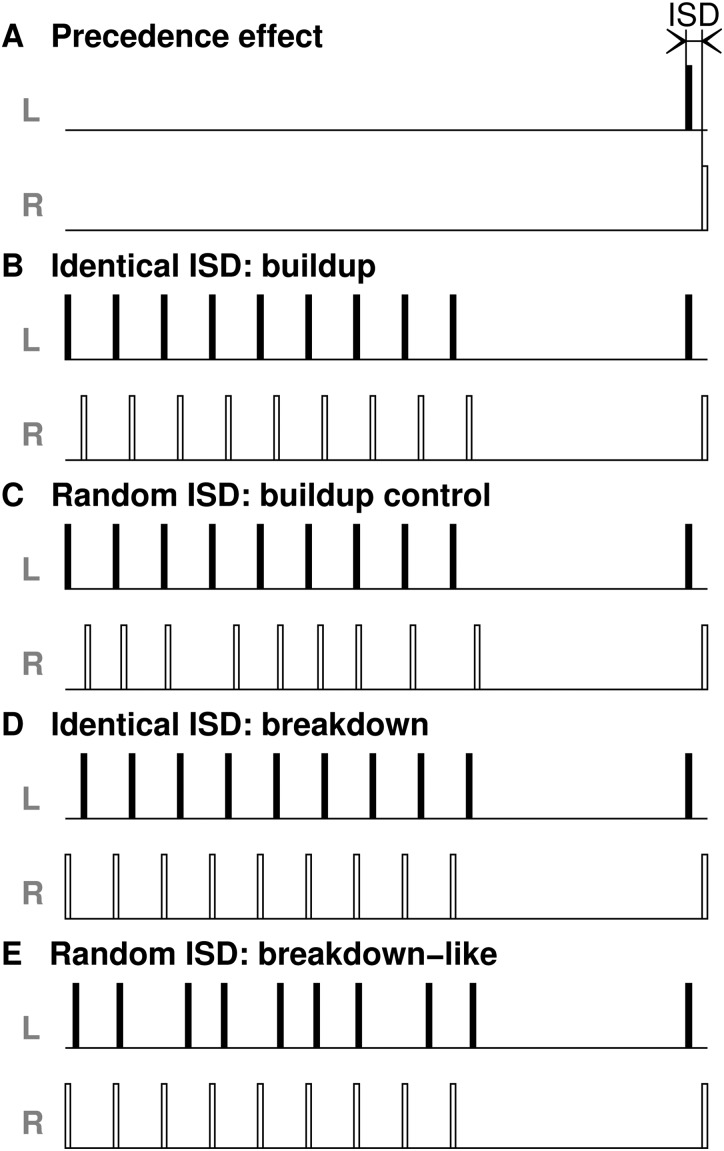FIG. 2.
Schematic of the stimulation conditions for paired source sounds, illustrated here for left-leading target sounds. (A) We tested for the presence of the PE using a pair of sounds with an interstimulus delay (ISD) between them. One of the sounds was delivered from the left (L) loudspeaker, whereas the other came from the right (R) loudspeaker. (B) In the buildup condition, the target stimulus was preceded by a left-leading conditioning train containing nine stimulus pairs with the same |ISD| as the target pair, followed by a period of silence. (C) In the condition used as a control for the buildup condition, the nine left-leading stimulus pairs had ISDs randomly chosen from a pre-determined set that excluded the target pair's ISD. (D) In the breakdown condition, the conditioning train was right-leading but with the same |ISD| as the left-leading target sound pair. (E) In the condition used to balance the presentation of paired source trials, the right-leading stimulus pairs had ISDs selected randomly from a set of values that excluded that of the target pair. The same applied for right-leading target sound pairs with the order of the paired sounds reversed accordingly.

